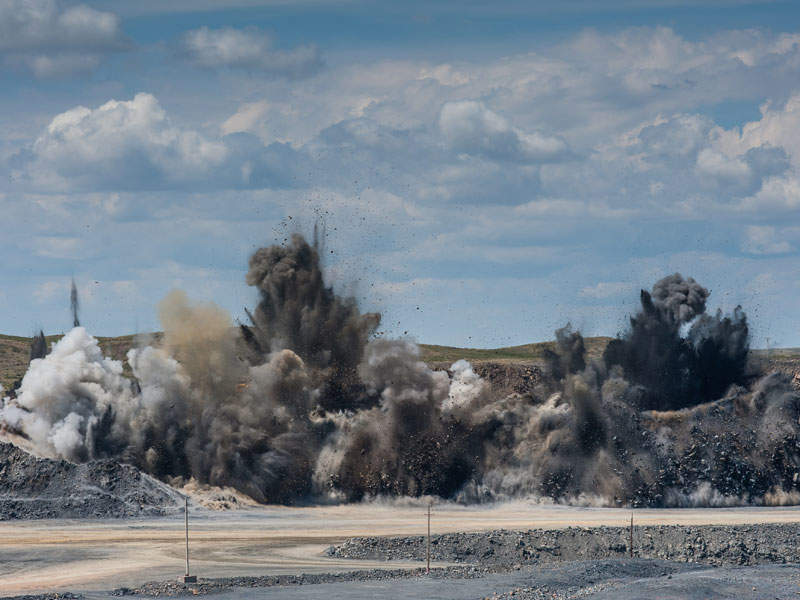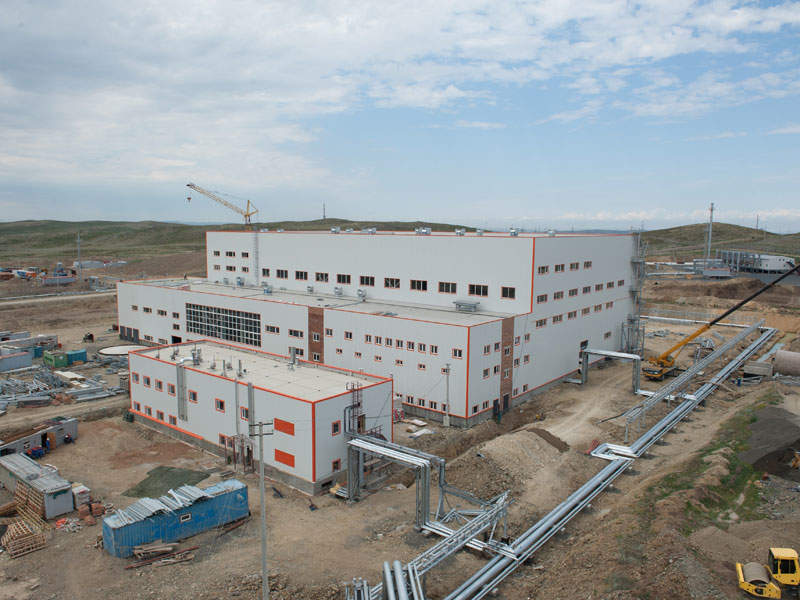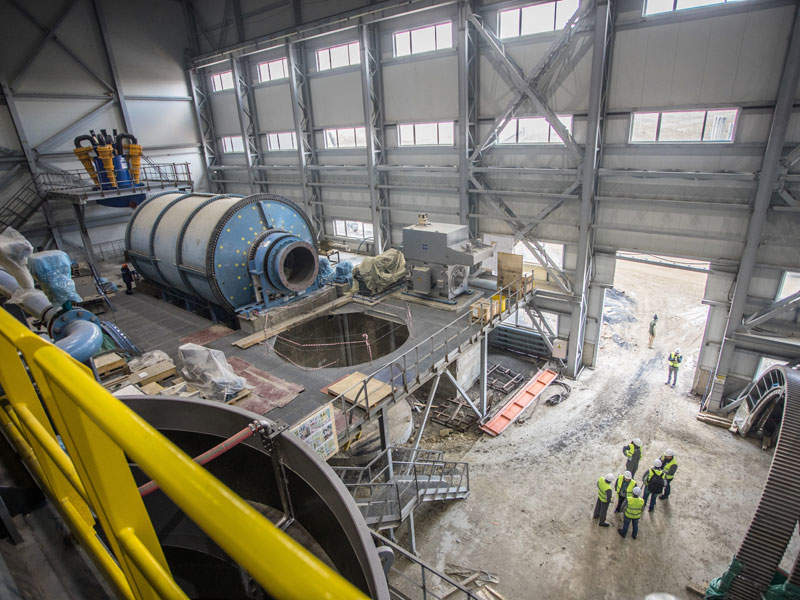The Kyzyl gold project comprises two gold deposits namely Bakyrchik and Bolshevik in north-eastern Kazakhstan, approximately 750km east of the capital city of Astana.
Polymetal acquired Altynalmas Gold, the holding company of the Kyzyl gold project, from Sumeru Gold and Sumeru for $618.5m in September 2014.
Polymetal started construction of the open-pit mine, along with processing plant and other infrastructure facilities in May 2016. First gold concentrate from the mine was produced in June 2018.
Approximately 2,000t of gold concentrate was shipped via rail to an off-taker in China in August 2018.
The project is expected to produce up to 1.8Mtpa of ore from open-pit mining during the first ten years of its estimated 22-year mine life. It is expected to produce at an average rate of 280koz in 2019 and 330koz for the rest of mine life.
The project created 608 jobs during open-pit mining operations and 1,139 jobs during underground mining operations.
Kyzyl gold project development details
The Kyzyl project is developed in two phases, with the first phase comprising the necessary developments for open-pit mining for ten years. The second phase will involve underground mining for a further 13 years from 2026 to 2039. It will include ore extraction from below the base of the open pit, along with the deeper underground ore resources.
Polymetal is simultaneously expanding the Amursk POX project, which aims to divert 50% of the concentrate produced at Kyzyl for in-house processing.
Kyzyl gold project geology and mineralisation
The Kyzyl gold deposit is believed to have formed due to intrusions, shearing, and hydrothermal activity. The Kyzyl Shear Zone, which holds most of the gold mineralisation of the project, is a part of the deformation zone formed due to the compressional forces along regional structures.
The 11.5km-long East-West striking KSZ dips 30° to 40° north with widths from 10m to 240m. The zone is host to shear foliation, brecciation, alteration, and sulphide mineralisation with depths ranging from 1km to 1.5km in the west, and 3km to 3.5km in the east.
Potentially economic mineralisation is represented by fine-grained gold associated with arsenopyrite and pyrite. Disseminated gold-sulphide mineralisation is mostly found in foliated mudstone, siltstone, and sandstone with quartz veining.
Kyzyl gold project reserves
As of January 2017, the Kyzyl project (Bakyrchik deposit) was estimated to contain JORC-compliant probable reserves of 29.15Mt of ore, which includes 3.1Moz from open-pit. Contained gold is estimated to be 7.3Moz.
Mining and processing of ore from Kyzyl
Polymetal’s plans use a combination of open-pit and underground mining methods at the mine.
Conventional open-pit mining method with drilling and blasting followed by load and haul is being used in the first phase of operations while the underhand cut-and-fill mining method will be used for underground mining in the second phase.
The open-pit is designed to have a production rate of 1.8Mtpa while the underground mine aims to produce 1.2Mtpa. The processing plant has the capacity to recover gold at a rate of 93.44% and produce 220,000tpa of concentrate.
The mined ore is being hauled to and dumped on the buffer ore stockpile. It is crushed and ground, followed by multiple milling, flotation, and flash flotation steps at a 1.8Mtpa sulphide flotation plant to produce sulphide concentrate with carbon as by-product.
Of the total concentrate produced, 50% will be diverted for in-house processing at the Amursk POX facility to improve effective gold recovery and reduce processing and transportation costs.
Infrastructure facilities at Kyzyl
Access to the project is through an existing road connecting the Almaty-Semey National Highway and from the Almaty-Ust-Kamenogorsk road in the east.
The project is in close proximity to the railhead of the new Ust-Kamenogorsk-Almaty-Charsk railroad line at Shalabay settlement and the Charsk junction station, which provides access to transport material from China and Russia.
Power is being supplied from the national power transmission network while water is sourced from a new pipeline being constructed by Polymetal from the Kyzylsu reservoir.
Financing
The European Bank of Reconstruction and Development (EBRD) granted a $140m loan to Bakyrchik Mining Venture, a fully owned entity of Polymetal International, to finance the development of the Kyzyl gold project.
Construction at Polymetal’s Kazakhstani mine
Major processing equipment was installed, including external electrical infrastructure, during the third quarter of 2017.
Foundations for the mill and other processing equipment were laid, and the tailings facility diversion dike was finalised during the second quarter of 2017.
Key players involved
Roscoe Postle Associates provided auditory services for to the feasibility report of the Kyzyl project.
EBRD and Wardell-Armstrong (WAI) were responsible for reviewing the social and environmental issues of the project.
Belarus-based BELAZ was contracted for the supply of trucks, while Russian company OMZ was engaged for supplying electric shovels.






